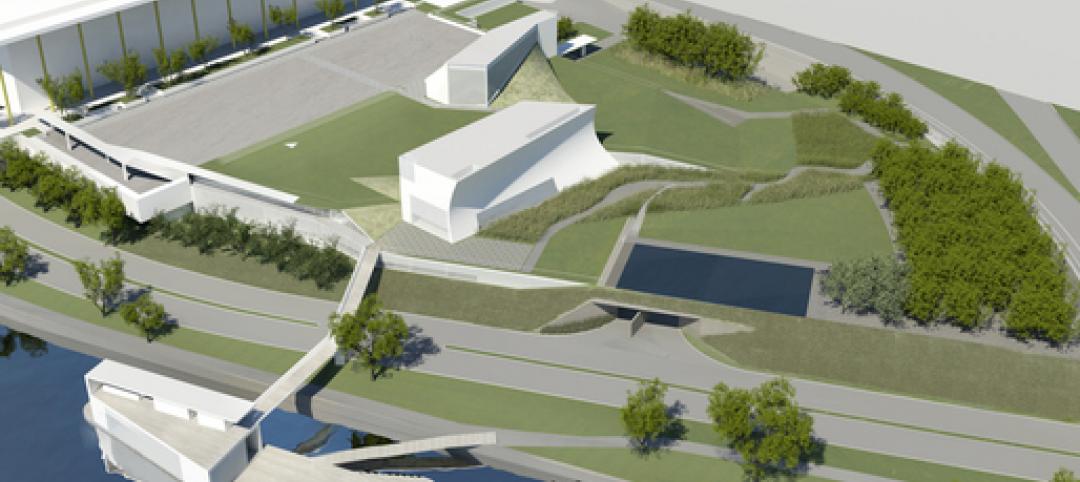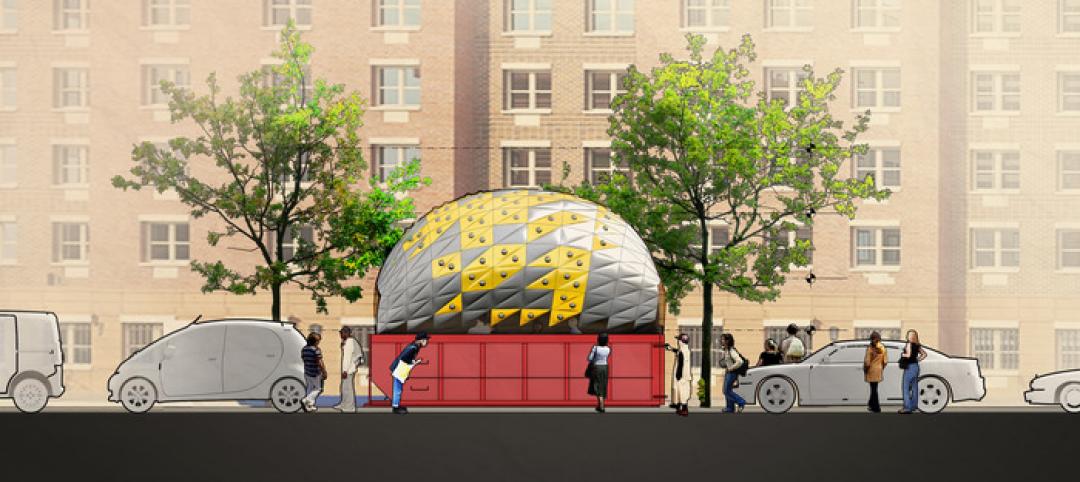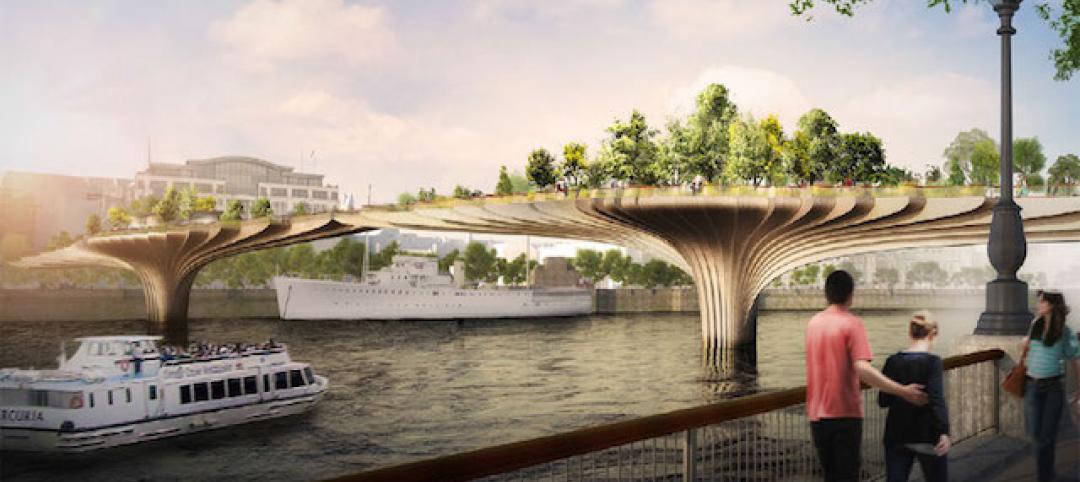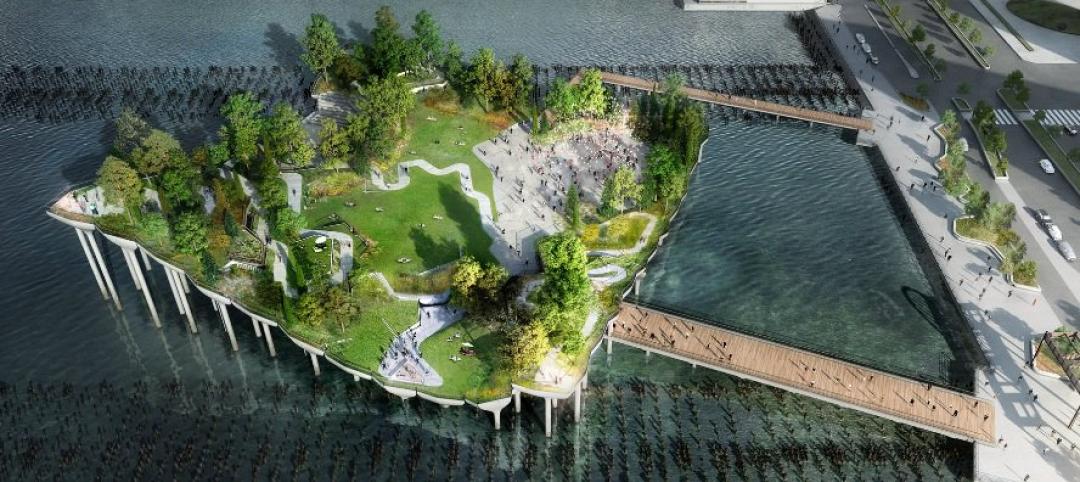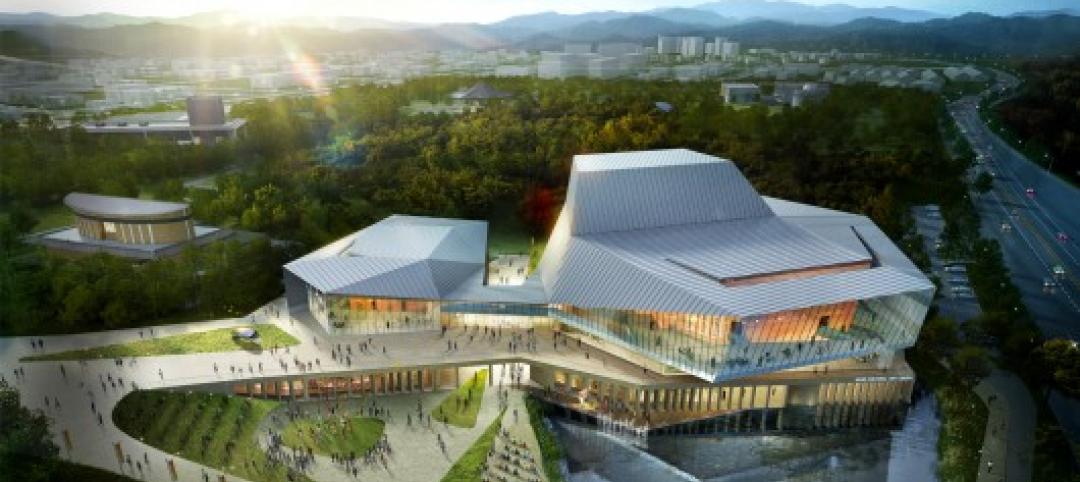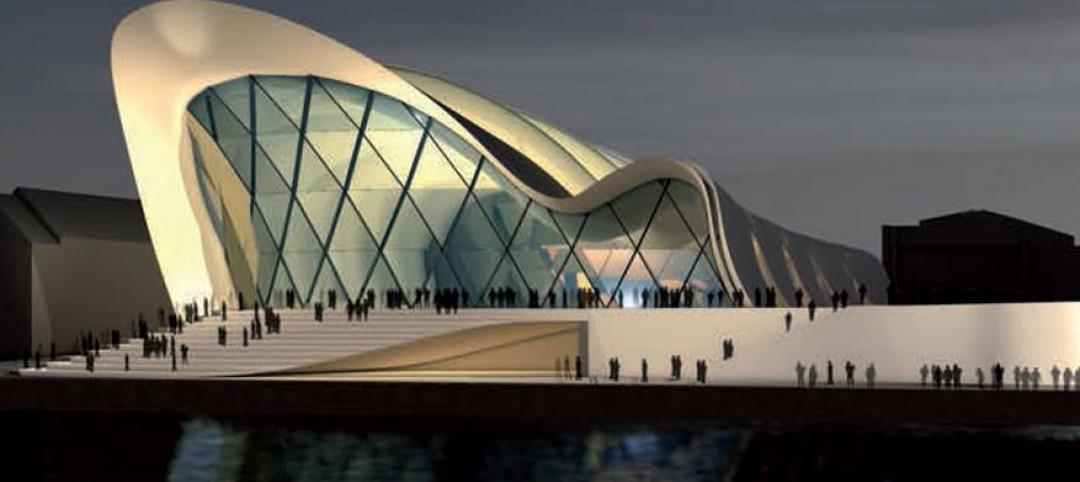
Designed by H. H. Richardson in the 1870s to serve the city's burgeoning Back Bay neighborhood, Trinity Church in the City of Boston would come to represent the essence of the Richardsonian Romanesque style, with its clay tile roof, abundant use of polychromy, rough-faced stone, heavy arches, and massive size. Its 9,500 tons rested on four elephantine granite pyramids, which were set atop 4,000 wooden pilings to prevent the structure from sinking into Back Bay's marshy wetlands.
 |
| PHOTOS: SHAWMUT DESIGN AND CONSTRUCTION |
Some 125 years after its completion, Trinity Church had grown into one of the largest Episcopal congregations in the country, holding 19 services a week and averaging 1,200 worshippers on Sundays. Trinity also drew 100,000 tourists a year, thanks to its status as a National Historic Landmark and one of the AIA's “10 Most Important Buildings in the United States.” Add to that more than 140 community programs that kept meeting rooms bustling 15 hours a day, six days a week, and it was easy to see how Trinity needed room for expansion.
Unfortunately, the passage of time had taken its toll on the building. The church's precious murals, stained glass, and intricate stonework had all been marred by a century-plus of wear. Worse, below ground, fluctuating water tables had damaged the wood pilings, threatening Trinity's very stability.
 |
| PHOTOS: SHAWMUT DESIGN AND CONSTRUCTION |
In 1995, church leaders inaugurated three years of master planning that led to a full-scale restoration and expansion of the church. The plan, like the structure itself, rested on four pillars: 1) return Trinity to its original beauty; 2) expand the church for future generations, 3) update the heating and cooling systems, and 4) keep the church operating during reconstruction.
Heavenly artwork
John La Farge, the father of the American Mural Movement, decorated the interior of Trinity Church with the goal of making parishioners feel as though they were “walking into a painting.” Bringing the church back to its original grandeur required years of historical research, planning, and troubleshooting.
To keep the renovation effort from interrupting religious services and tour groups, general contractor Shawmut Design and Construction and architects/preservationists Goody Clancy installed a series of mobile access towers high above the main sanctuary. Instead of having the usual ungainly wooden beams planted throughout the church, the scaffolding was supported by steel poles planted into the building's stone foundation pyramids.
 |
| Trinity Church occupies a tight, urban site in the heart of Boston’s bustling Copley Square. The Building Team focused on minimizing the impact construction would have on the neighborhood’s offices, hotels, and shops. PHOTO: FARRELL ASSOCIATES CONSTRUCTION PHOTOGRAPHY |
Work focused first on restoring basic structural integrity: repointing masonry, re-roofing, and installing flashing. The team went to great lengths to replicate and restore the original red mortar and replace broken stonework, much of which came from quarries that had vanished long ago. Fortunately, a cache of original stone remnants discovered under the church's west porch allowed the team to complete the repairs in fine fashion.
Moving on to Trinity's artwork, the conservators—including experts from John Canning Painting & Conservation Studios and Gianfranco Pocobene Studio—engaged in a nearly yearlong process that included restoring La Farge's murals and surrounding decoration, bringing back the original brick red background specified by Richardson and La Farge.
Growing God's house
Trinity's biggest concern, however, was lack of space for the growing congregation. Although church leaders had considered expanding into nearby buildings, Trinity's location in a tightly packed urban center limited that option. Instead of looking horizontally, Shawmut, Goody Clancy, and structural engineer LeMessurier Consultants turned their gaze downward to the basement.
Little more than a large crawlspace at the start of renovation, the basement eventually became a 13,000-sf addition, known as the Undercroft. Creating this space required lowering the basement by four feet, which sometimes had to be done by hand to avoid disturbing the sanctuary above or damaging wooden pilings below. Damaged pilings were repaired and capped with metal sections. Engineers also installed pumps to keep the pilings below the water line.
 |
| The Parish House, used for classes, meetings, and rehearsals, sits adjacent to Trinity Church and also was completely renovated and restored. PHOTO: DAVID LAMB ARCHITECTURAL PHOTOGRAPHY |
The excavation left a vast space that exposed the handsome raw granite of Trinity's pyramid footings. The stone was complemented by warm cherry millwork and, inspired by the church's collection of stained glass, a commissioned series of pivoting glass doors that allowed the Undercroft to be portioned up into rooms of various sizes.
Saving more than souls
Technically speaking, the Building Team's most difficult task proved to be updating the HVAC system. Due to its location, the building had no real “back end,” and M/E engineer Cosentini Associates determined that installing an HVAC system in the attic would pose a risk (moisture and vibration) to the works of art below.
The team turned to geothermal energy for a solution. Installing the geothermal pumps meant drilling six wells through soil and bedrock to a depth of 1,500 feet—twice the height of the nearby John Hancock Tower. The job was made doubly difficult by the need to drill without disturbing church services or social activity in adjacent Copley Square. Shawmut solved this problem by erecting noise-reducing wooden structures around the drill system.
All told, the Trinity renovation proved to be one of Boston's most remarkable transformations, earning numerous awards and acclaim from across the nation. Today, with its lusciously restored decoration, its gentle embrace of environmental values, and its firm commitment to future growth, Trinity carries on its founders' vibrant religious and community mission.
Related Stories
| Dec 8, 2014
Steven Holl's expansion to JFK performing arts building breaks ground
Designed by Holl and BNIM, the 65,000-sf facility will function as an interactive space, where artists and the community can come together.
| Dec 5, 2014
Must see: Dumpster becomes a public space in art installation
Dumpsters tend to be seen as necessary evils of city life, but John H. Locke and Joaquin Reyes wanted New York City's residents to think about them in a different way.
| Dec 4, 2014
£175 million 'Garden Bridge' gets the green light to cross the Thames
Westminster Council has approved a £175 million 'Garden Bridge' that will allow pedestrian traffic only. There has been some controversy about this bridge, which is expected to attract seven million visitors annually.
| Nov 25, 2014
Behnisch Architekten unveils design for energy-positive building in Boston
The multi-use building for Artists For Humanity that is slated to be the largest energy positive commercial building in New England.
| Nov 18, 2014
Fan of the High Line? Check out NYC's next public park plan (hint: it floats)
Backed by billionaire Barry Diller, the $170 million "floating park" is planned for the Hudson River, and will contain wooded areas and three performance venues.
| Nov 17, 2014
'Folded facade' proposal wins cultural arts center competition in South Korea
The winning scheme by Seoul-based Designcamp Moonpark features a dramatic folded facade that takes visual cues from the landscape.
| Nov 14, 2014
Bjarke Ingels unveils master plan for Smithsonian's south mall campus
The centerpiece of the proposed plan is the revitalization of the iconic Smithsonian castle.
| Nov 12, 2014
Chesapeake Bay Foundation completes uber-green Brock Environmental Center, targets Living Building certification
More than a decade after opening its groundbreaking Philip Merrill Environmental Center, the group is back at it with a structure designed to be net-zero water, net-zero energy, and net-zero waste.
| Nov 12, 2014
Designs by three finalists for new Beethoven concert hall unveiled
David Chipperfield and Valentiny are among the finalists for a new concert hall being built to commemorate Beethoven’s 250th birthday in his hometown of Bonn, Germany.


